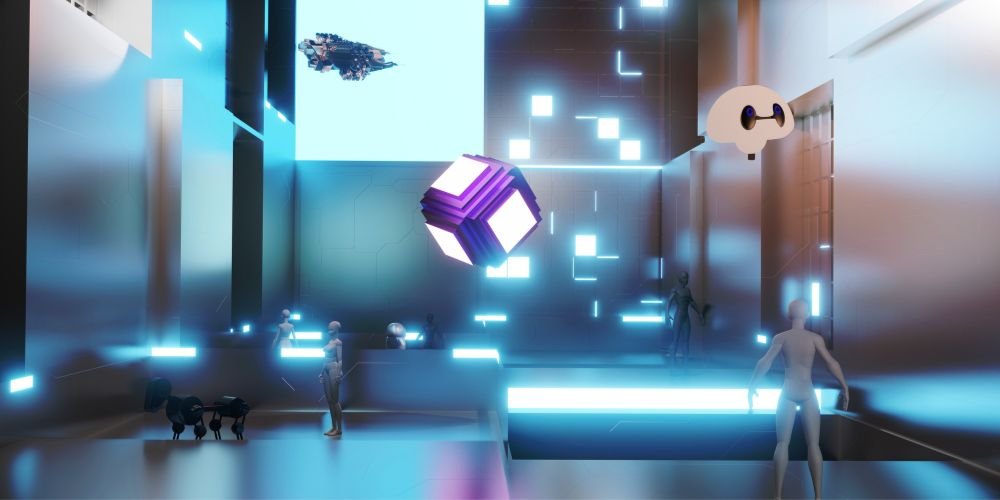In the ever-evolving landscape of technology, hyper-realistic virtual worlds emerge as a groundbreaking frontier, blurring the lines between the digital realm and reality itself. This article explores hyper-realistic virtual worlds, unveiling their significance, underlying technologies, diverse applications, and the transformative impact they hold on digital experiences in the modern era.
The Significance of Hyper-Realistic Virtual Worlds
Hyper-realistic virtual worlds mark a paradigm shift in digital experiences, offering realism that transcends traditional virtual environments. Their significance lies in immersing users in visually stunning and highly detailed landscapes, replicating real-world scenarios with unprecedented fidelity. It enhances entertainment and gaming and extends to applications in education, training, and various industries, creating a new era of immersive and engaging digital experiences.
Unprecedented Realism and Immersion
At the core of hyper-realistic virtual worlds is the pursuit of unprecedented realism and immersion. Advanced graphics rendering, high-resolution textures, and cutting-edge physics simulations converge to create environments that mirror the intricacies of the real world. Users are transported into digital realms where the line between real and virtual becomes indistinguishable, fostering a heightened sense of presence and engagement.
Evolution of Graphics Rendering Technologies
The journey towards hyper-realism intertwines the evolution of graphics rendering technologies. Real-time ray tracing, advanced lighting models, and intricate detail in textures contribute to the lifelike quality of virtual worlds. These technologies simulate the behavior of light and materials with such precision that digital environments closely mimic the visual richness of the physical world, elevating the overall visual experience.
Impact on Entertainment and Gaming
In entertainment, hyper-realistic virtual worlds redefine the gaming landscape. Game developers leverage these technologies to create visually stunning and emotionally immersive experiences. From lifelike character animations to intricately detailed environments, gamers are transported into alternate realities that rival the visual spectacle of blockbuster movies, enhancing the overall enjoyment and engagement of gaming experiences.
Underlying Technologies of Hyper-Realistic Virtual Worlds
The realization of hyper-realistic virtual worlds is underpinned by a fusion of cutting-edge technologies that collectively contribute to their unprecedented level of detail and realism.
Real-Time Ray Tracing for Photorealistic Environments
Real-time ray tracing, a groundbreaking rendering technique, is pivotal in achieving photorealistic environments. By simulating the behavior of light rays as they interact with virtual objects, this technology creates visually stunning reflections, shadows, and lighting effects. The result is a level of visual fidelity that brings virtual scenes remarkably close to what the human eye perceives in the physical world.
High-Resolution Textures and 3D Modeling
Integrating high-resolution textures and intricate 3D modeling is instrumental in crafting hyper-realistic virtual worlds. Artists and designers meticulously create digital assets with an attention to detail beyond conventional standards. From the fine texture of surfaces to the nuanced movements of characters, these elements collectively contribute to the overall realism and immersion within virtual environments.
Physics Simulations and Dynamic Environments
To enhance the sense of realism, hyper-realistic virtual worlds incorporate advanced physics simulations and dynamic environments. From realistic water physics to authentic object interactions, these simulations create a dynamic and responsive world that reacts to user input and environmental changes. This level of interactivity adds a layer of authenticity that distinguishes hyper-realistic virtual worlds from traditional virtual experiences.
Diverse Applications of Hyper-Realistic Virtual Worlds
Beyond entertainment and gaming, hyper-realistic virtual worlds find applications across diverse fields, reshaping how we learn, train, and engage with various industries.
Virtual Training and Simulation Environments
In fields such as aviation, healthcare, and military training, hyper-realistic virtual worlds provide immersive and risk-free training environments. Pilots can simulate complex flight scenarios, surgeons can practice intricate procedures, and military personnel can undergo realistic mission simulations. It enhances skill development and reduces real-world risks associated with training exercises.
Architectural Visualization and Design
Architects and designers leverage hyper-realistic virtual worlds to visualize and refine architectural projects. From exploring interior spaces to assessing the impact of natural lighting, these virtual environments offer a detailed preview of designs before physical construction begins. This application streamlines the design process and allows more informed decision-making in the architectural and construction industries.
Virtual Tourism and Cultural Exploration
Hyper-realistic virtual worlds open the door to virtual tourism and cultural exploration. Users can virtually visit historic landmarks, explore distant cities, or experience cultural events from their homes. It facilitates remote access to diverse locations and fosters a sense of global connection and understanding.
Challenges and Future Developments in Hyper-Realistic Virtual Worlds
While hyper-realistic virtual worlds offer unprecedented experiences, they are not without challenges. Addressing these challenges and exploring future developments are integral to the continued evolution of hyper-realistic virtual experiences.
Hardware Requirements and Accessibility
Achieving hyper-realism often demands substantial computing power and advanced hardware. It poses challenges regarding accessibility, as not all users may have access to the high-end equipment required to experience these virtual worlds fully. Future developments may focus on optimizing technologies to ensure a broader audience can engage with hyper-realistic experiences.
Balancing Realism and Performance
Maintaining a balance between hyper-realism and performance is a continuous challenge. High levels of detail and realism can strain hardware resources, impacting overall system performance. To address these performance challenges, ongoing developments may explore innovative solutions, such as optimized rendering techniques and cloud-based processing.
Advancements in Virtual Reality (VR) and Augmented Reality (AR) Integration
The integration of hyper-realistic virtual worlds with Virtual Reality (VR) and Augmented Reality (AR) technologies holds promise for the future. This convergence could result in even more immersive experiences, where users can interact seamlessly with hyper-realistic elements in their physical surroundings. Advancements in this direction may redefine how we perceive and interact with digital content.
Conclusion
Hyper-realistic virtual worlds represent a pinnacle in the evolution of digital experiences, offering a level of realism that transforms how we engage with virtual environments. From entertainment and gaming to training and cultural exploration, the applications of hyper-realistic virtual worlds are diverse and far-reaching. As technology advances, addressing challenges and pushing the boundaries of realism, the future promises even more captivating and immersive digital experiences that redefine our understanding of the digital realm. Hyper-realistic virtual worlds are not just a technological achievement but a testament to the limitless possibilities of human creativity and innovation in the digital age.










